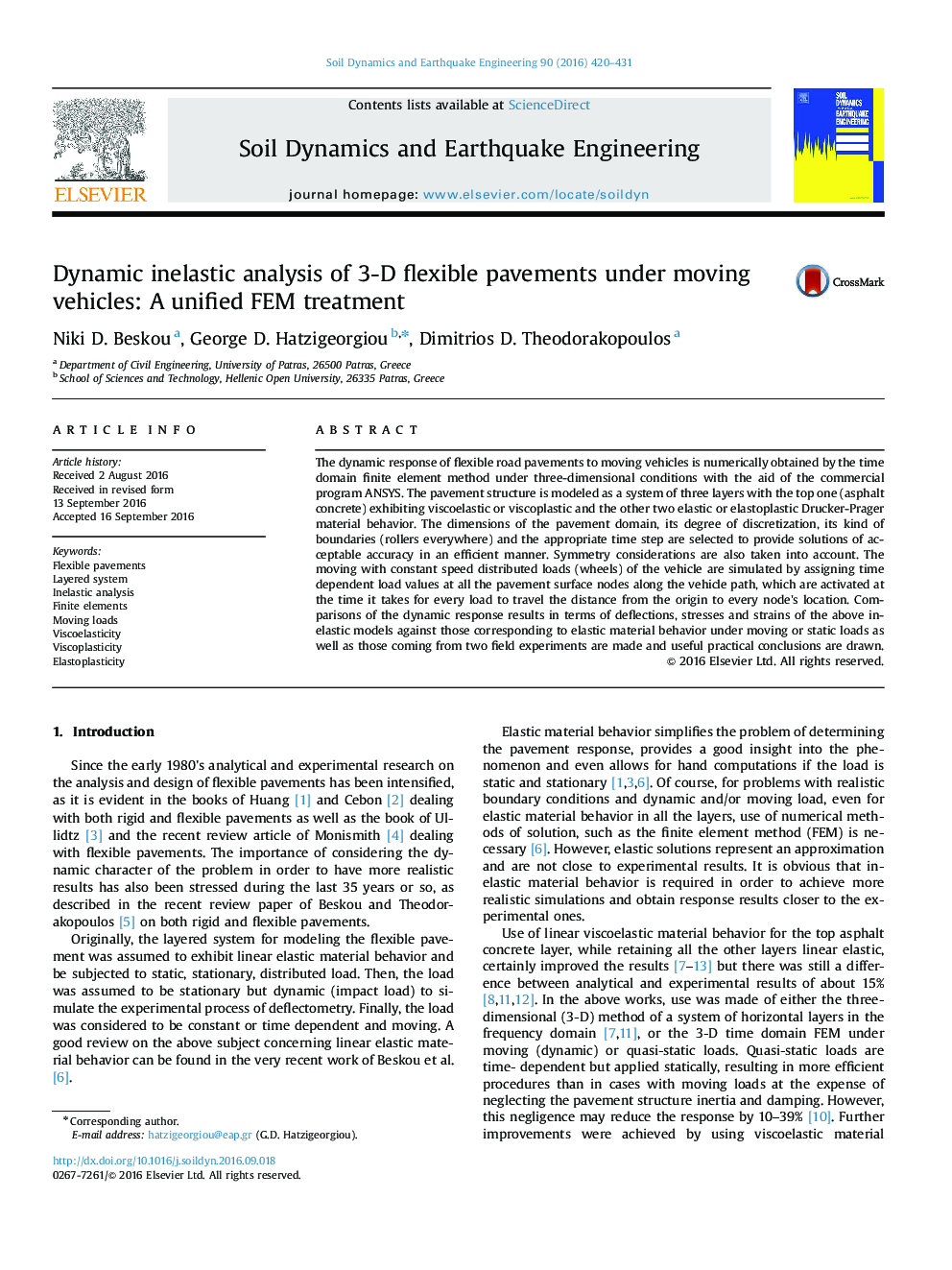| Article ID | Journal | Published Year | Pages | File Type |
|---|---|---|---|---|
| 4927260 | Soil Dynamics and Earthquake Engineering | 2016 | 12 Pages |
Abstract
The dynamic response of flexible road pavements to moving vehicles is numerically obtained by the time domain finite element method under three-dimensional conditions with the aid of the commercial program ANSYS. The pavement structure is modeled as a system of three layers with the top one (asphalt concrete) exhibiting viscoelastic or viscoplastic and the other two elastic or elastoplastic Drucker-Prager material behavior. The dimensions of the pavement domain, its degree of discretization, its kind of boundaries (rollers everywhere) and the appropriate time step are selected to provide solutions of acceptable accuracy in an efficient manner. Symmetry considerations are also taken into account. The moving with constant speed distributed loads (wheels) of the vehicle are simulated by assigning time dependent load values at all the pavement surface nodes along the vehicle path, which are activated at the time it takes for every load to travel the distance from the origin to every node's location. Comparisons of the dynamic response results in terms of deflections, stresses and strains of the above inelastic models against those corresponding to elastic material behavior under moving or static loads as well as those coming from two field experiments are made and useful practical conclusions are drawn.
Keywords
Related Topics
Physical Sciences and Engineering
Earth and Planetary Sciences
Geotechnical Engineering and Engineering Geology
Authors
Niki D. Beskou, George D. Hatzigeorgiou, Dimitrios D. Theodorakopoulos,
